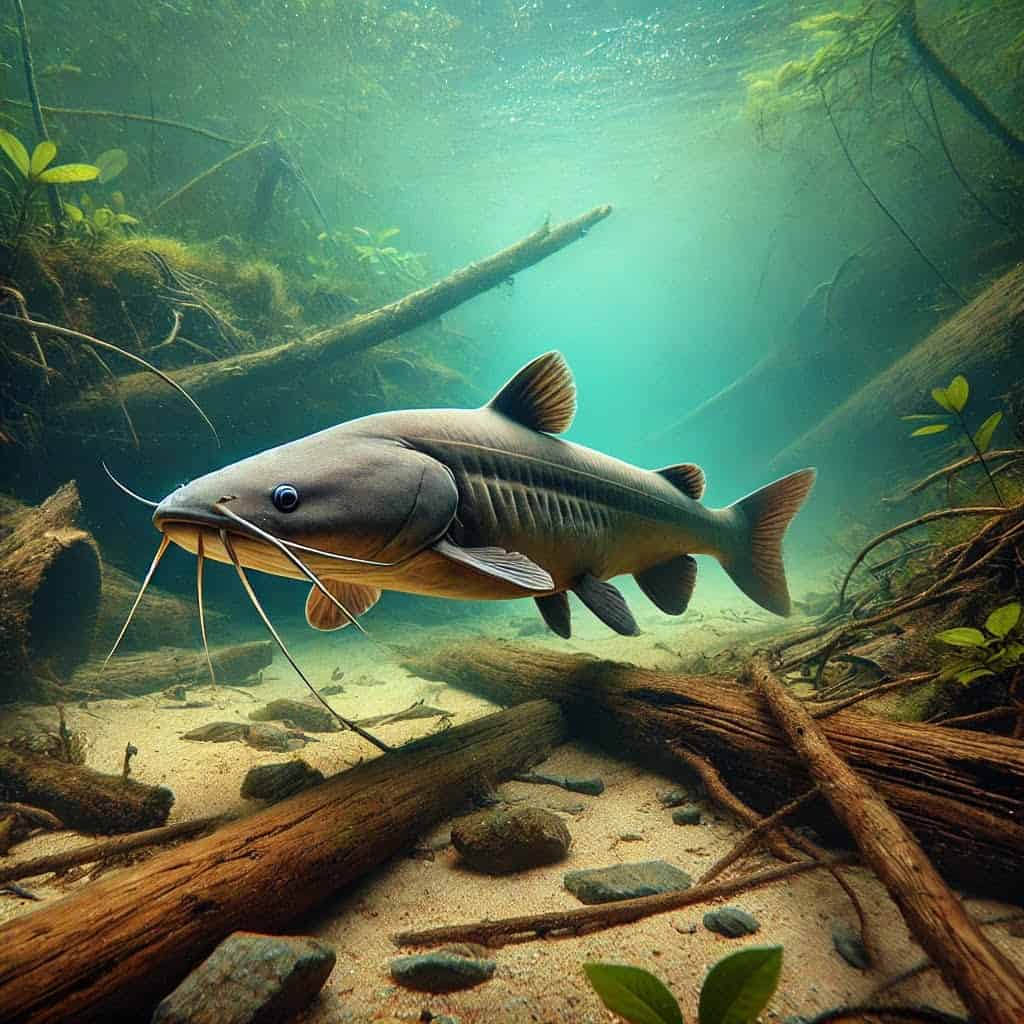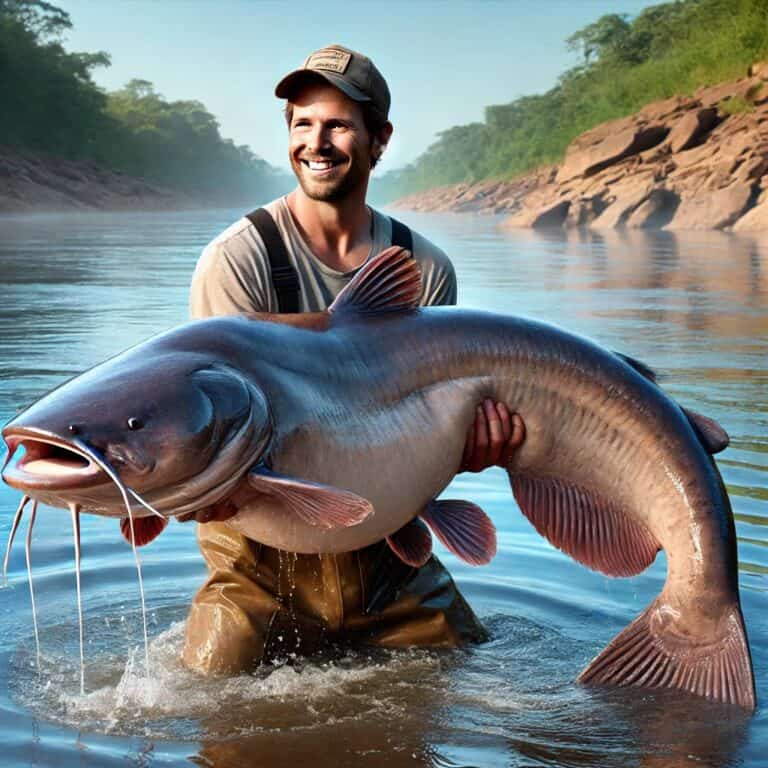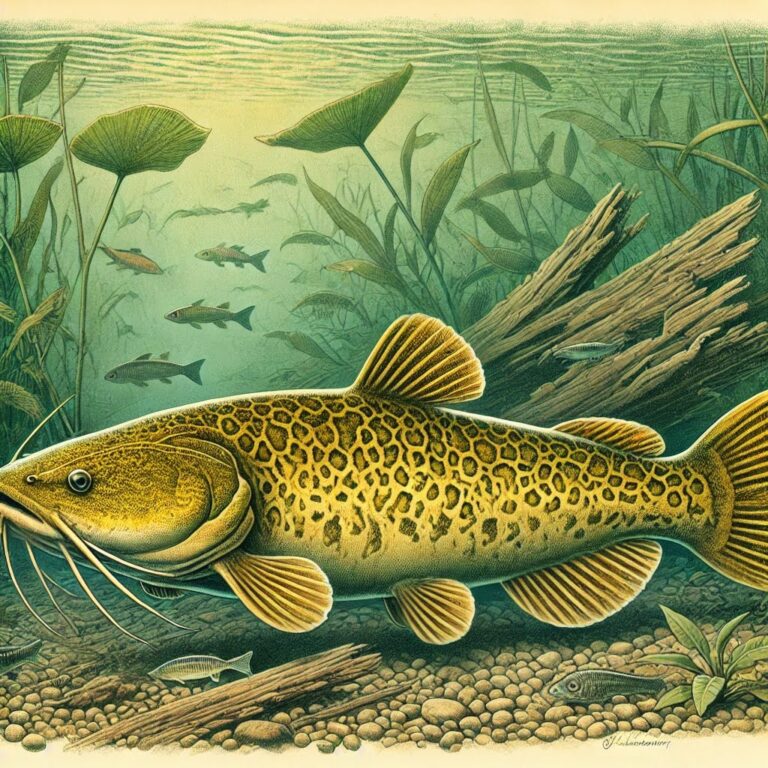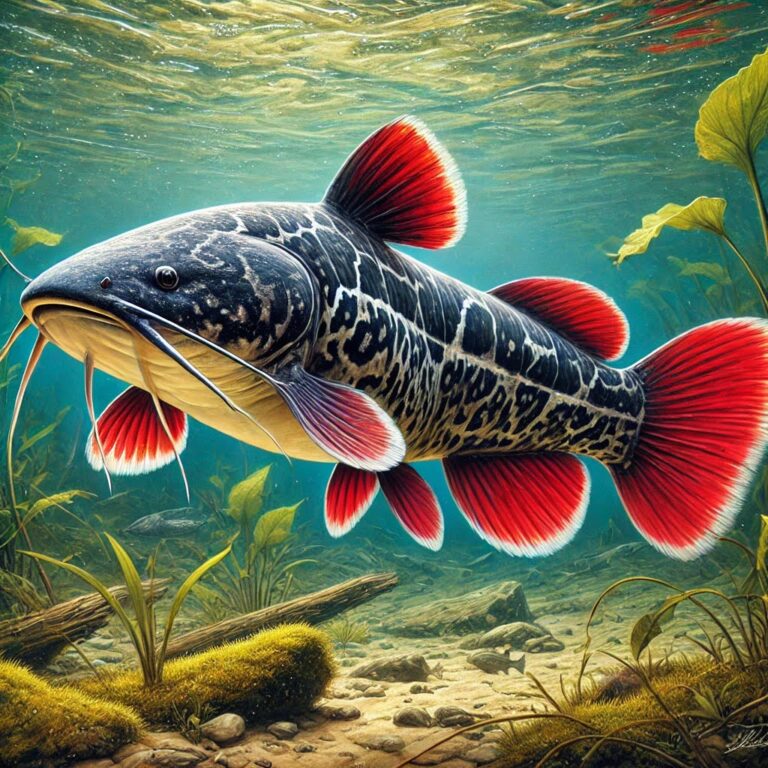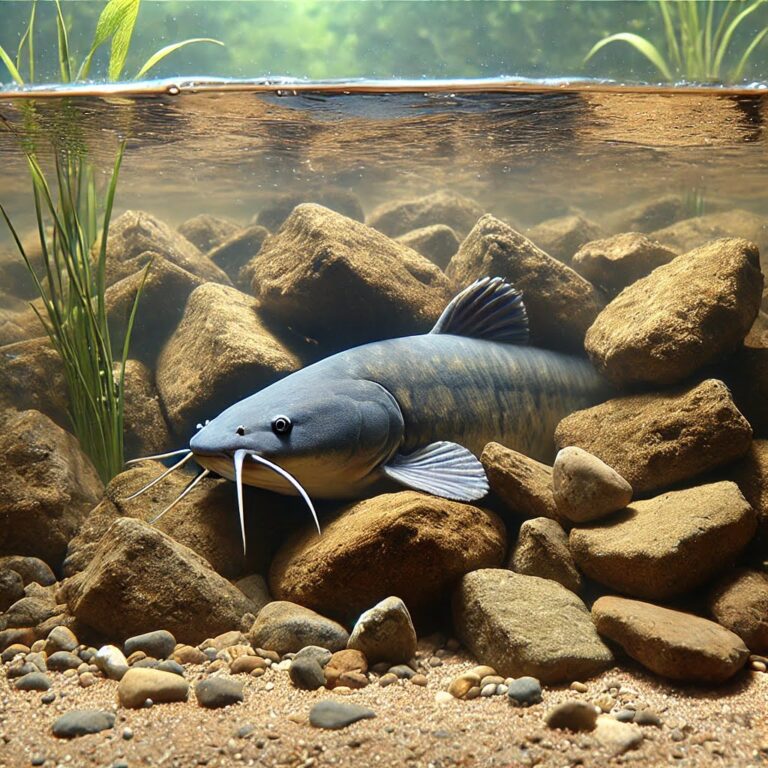Wels Catfish Facts: 10 Surprising Things You Didn’t Know
The Wels Catfish – What is it?
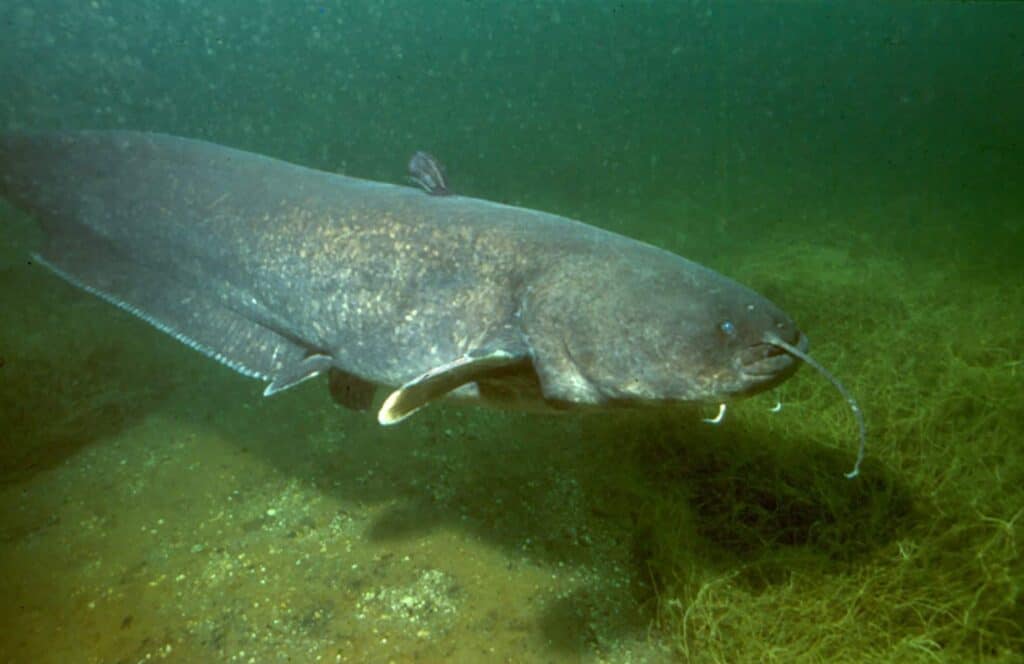
(image source: Wikipedia)
The Wels catfish, scientifically known as Silurus glanis, is a freshwater giant that has intrigued anglers, biologists, and nature enthusiasts for centuries.
Native to the river basins of Eastern Europe, the Wels catfish has become notorious for its impressive size, unique behavior, and adaptability.
This comprehensive guide shows us what makes the Wels catfish a fascinating subject of study and a coveted catch for anglers.
Physical Characteristics
Size and Weight
The Wels catfish is one of the largest freshwater fish in the world.
Mature individuals typically range from 1.5 to 2.5 meters (5 to 8 feet) in length, but there have been reports of Wels catfish exceeding 3 meters (10 feet) and weighing over 200 kilograms (440 pounds).
These giants are often found in large, deep river systems where they have ample space and resources to grow.
Appearance
The Wels catfish has a distinctive appearance that sets it apart from other freshwater fish.
Its body is elongated and muscular, with a broad, flat head and a wide mouth lined with numerous small, sharp teeth.
The skin is smooth and slimy, lacking scales, which helps reduce resistance when moving through water.
The coloration can vary, but they are typically dark green to brown on the back with a lighter, mottled pattern on the sides and a pale belly.
The fins are robust and the tail is broad, aiding in powerful swimming bursts.
Habitat and Distribution
Native Range
The Wels catfish is native to Eastern Europe and parts of Western Asia.
Its natural range includes river basins such as the Danube, Dnieper, and Volga, as well as numerous lakes and reservoirs in these regions.
These waters provide the ideal habitat for the Wels catfish, characterized by deep channels, abundant cover, and plentiful food sources.
Introduced Range
In recent decades, the Wels catfish has been introduced to several other parts of Europe and beyond, including France, Spain, Italy, and even parts of the UK.
These introductions have been both intentional, for sport fishing and aquaculture, and accidental, through various means such as escapes from fish farms.
In these new environments, the Wels catfish has adapted well, sometimes to the detriment of local ecosystems.
Behavior and Diet
Feeding Habits
Wels catfish are opportunistic predators with a highly varied diet.
They feed on a wide range of prey, including fish, amphibians, birds, and even small mammals.
Their hunting strategy typically involves ambush predation, where they lie in wait for unsuspecting prey to pass by before striking with a rapid gulp.
In some areas, Wels catfish have exhibited unusual behaviors, such as beaching themselves to catch pigeons or other birds—a testament to their adaptability and opportunistic nature.
Nocturnal Activity
These catfish are primarily nocturnal, meaning they are most active during the night.
During the day, they tend to hide in deep waters, under submerged logs, or within dense vegetation.
Their nocturnal habits make them challenging to study and catch, adding to their mystique and appeal among anglers.

Reproduction and Lifecycle
Spawning
Wels catfish reach sexual maturity at around 3 to 5 years of age.
Spawning typically occurs in late spring to early summer when water temperatures reach about 20°C (68°F).
During this time, males prepare nesting sites in shallow, vegetated areas.
The female lays thousands of eggs in these nests, which the male then fertilizes.
The male guards the eggs vigilantly until they hatch, usually within a week, depending on water temperature.
Growth and Longevity
Wels catfish grow rapidly, especially in their early years.
They can live for several decades, with some individuals known to surpass 50 years of age.
Their long lifespan and substantial growth potential are key factors in their ability to reach such impressive sizes.
Angling for Wels Catfish
Popularity Among Anglers
Wels catfish are a prized catch among anglers due to their size, strength, and the challenge they present.
Targeting these giants requires specialized gear, knowledge, and patience.
Popular fishing methods include using heavy-duty rods and reels, robust fishing lines, and large bait such as live fish, dead bait, or even specially prepared catfish pellets.
Techniques and Tips
- Location: Focus on deep river channels, large lakes, and areas with plenty of cover.
- Timing: Fish during the night or early morning when Wels catfish are most active.
- Bait: Use large, smelly baits like dead fish, liver, or specially made catfish baits.
- Equipment: Ensure your gear is up to the task, with strong rods, reels, and heavy lines capable of handling these powerful fish.
Ecological Impact
Invasive Species Concerns
In areas where Wels catfish have been introduced, they can pose significant ecological challenges.
As apex predators, they can disrupt local ecosystems by preying on native species, competing with indigenous fish for resources, and altering food webs.
This has led to concerns about their impact on biodiversity and the health of aquatic ecosystems.
Conservation and Management
Efforts to manage Wels catfish populations vary by region. In some places, they are protected due to their value as a sport fish and their role in the ecosystem.
In others, especially where they are considered invasive, management strategies may include regulated fishing, habitat modification, and public awareness campaigns to control their spread and mitigate their impact.
Scientific Research and Studies
Behavior and Physiology
Research on Wels catfish has provided insights into their behavior, physiology, and ecological role.
Studies have explored their feeding habits, reproductive strategies, and adaptability to different environments.
Understanding these aspects is crucial for managing their populations and mitigating their impact in non-native areas.
Environmental DNA (eDNA) Studies
Recent advancements in environmental DNA (eDNA) technology have allowed scientists to monitor Wels catfish populations more effectively.
By analyzing water samples for traces of DNA, researchers can detect the presence of Wels catfish in various habitats, assess population sizes, and track their movements.
This non-invasive method offers a valuable tool for conservation and management efforts.
Cultural and Historical Significance
Folklore and Legends
The Wels catfish has a prominent place in the folklore and legends of the regions it inhabits.
In some cultures, these fish are regarded with a mixture of awe and fear due to their size and perceived power.
Tales of giant catfish pulling fishermen into the water or swallowing birds whole have contributed to their mythical status.
Culinary Use
In many parts of Europe, Wels catfish are also valued for their culinary qualities.
The flesh is firm and flavorful, making it a popular choice for various dishes.
In some regions, traditional recipes highlight the unique taste and texture of Wels catfish, contributing to local cuisine and culture.
Conservation Status
IUCN Red List
The Wels catfish is currently listed as Least Concern on the IUCN Red List, indicating that it is not considered at risk of extinction.
However, the species’ status can vary locally, especially in areas where habitat degradation or overfishing occurs.
Protective Measures
In regions where Wels catfish populations are declining, protective measures may include habitat restoration, fishing regulations, and conservation programs to ensure sustainable populations.
These efforts are essential for maintaining the ecological balance and supporting the species’ long-term survival.
Conclusion
The Wels catfish is a remarkable species that continues to captivate and challenge those who encounter it.
For anglers, it offers an exciting and rewarding quarry, while for scientists and conservationists, it presents opportunities and challenges in equal measure.
As we continue to learn more about this incredible fish, our appreciation and understanding of its role in freshwater ecosystems will only grow, ensuring that the legacy of the Wels catfish endures for generations to come.

